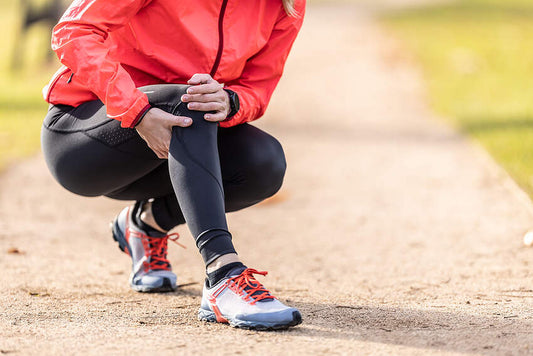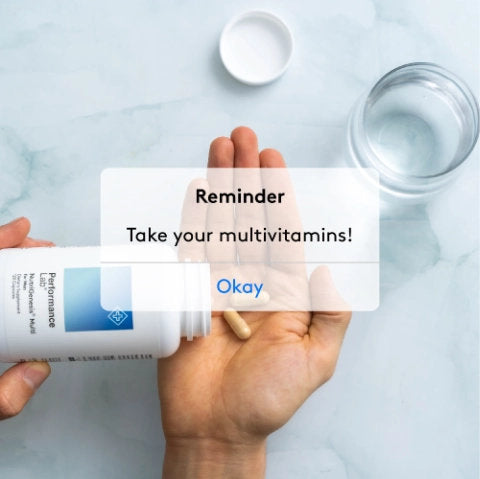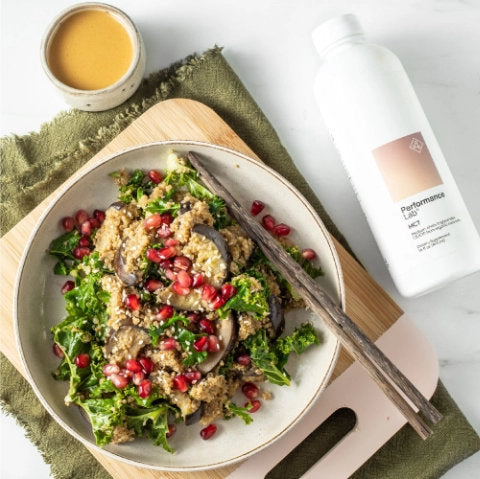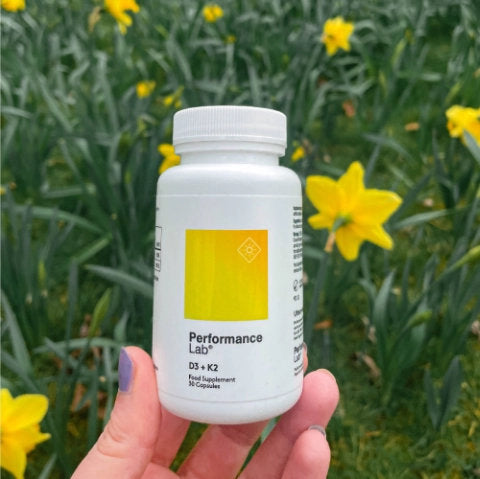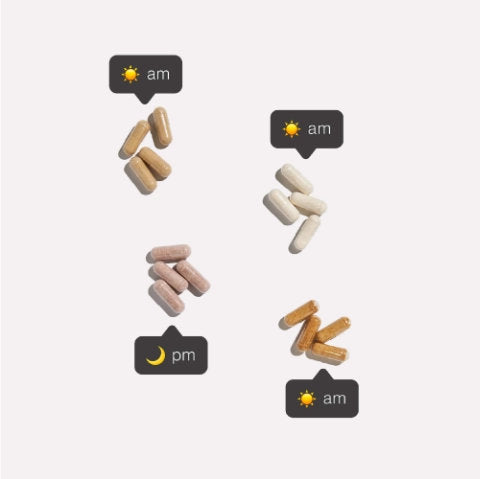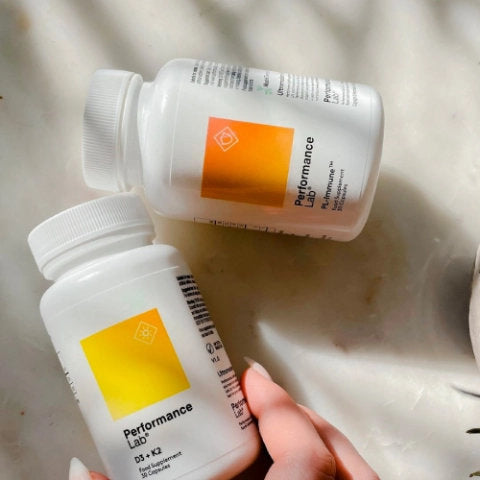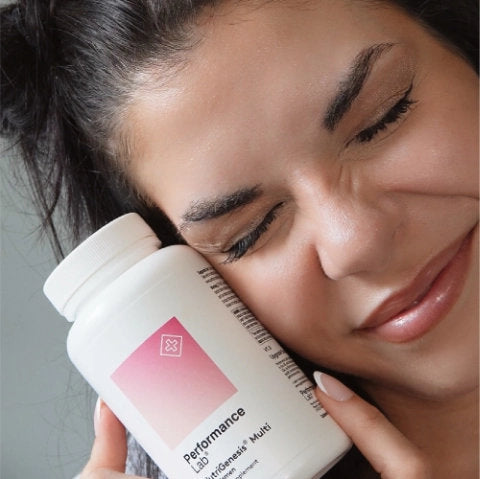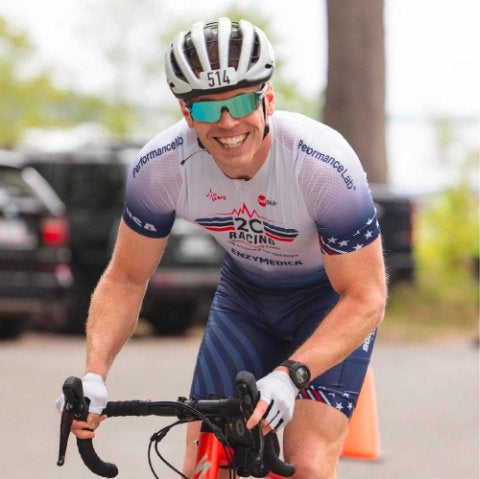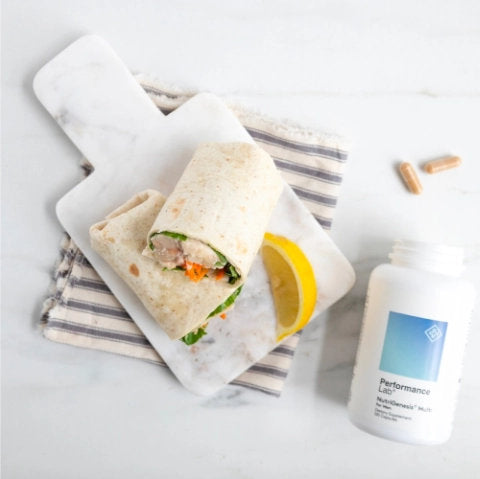Key Takeaways:
- If your joints are making a cracking sound, it's usually harmless and caused by processes like gas bubbles forming within the joint. [6, 14]
- However, if you experience joint popping with pain, instability, or swelling, it could indicate an injury, which requires an appointment with a specialist. [7]
- Nutrient deficiencies (such as low vitamin D) are not commonly known to cause joint cracking, but they can contribute to joint issues that do increase the risk. [8]
- While supplements, physical therapy, stretching, and targeted exercise support general joint health, evidence for reducing joint popping specifically is lacking. [9]
- If you want to strengthen your joint function, certain supplements may help — read on to find out our recommendations.
Popping Joints: Sign Of A Vitamin Deficiency?
Joint health is something that most of us don’t think about. When we’re young, we take it for granted when everything works the way it’s supposed to. But as we age—and even for highly active people—joint stiffness, tightness, and immobility can begin to take its toll.
If you’re experiencing popping or cracking when you move certain joints, it may be something to keep an eye on. If there’s no pain or significant discomfort associated with it, it may not necessarily be an injury. However, it could be your body’s way of telling you it’s missing something it needs.
In this article, we’re breaking down everything you need to know about popping joints—why it happens, if they’re a sign of nutrient deficiencies, and how you can prevent it from happening.
Why Does a Cracking Sound in Joints Happen?

There’s no denying that popping or cracking joints aren’t the most pleasant feeling around. The symptoms of joint popping vary between people.
Whether it’s the popping, snapping, cracking, or clicking of a joint, the cause usually isn’t narrowed down to a single thing. Rather, it’s usually based on the frequency of occurrence.
Joint popping that happens once and is accompanied by pain, discomfort, or joint instability can be the result of injury to the joint itself. [10] It can occur due to [7, 11, 12, 13] :
- Ligament strain or tear
- Tendon strain or tear (tendon rupture)
- Bone fractures
- Joint dislocation
In these cases, a professional treatment may be needed to fix the issue.
Harmless Causes of Joint Cracking Sounds: Synovial Fluid Gas, Knee Joint, and More
Some other reasons why joints may pop or crack include:
- Escaping gas: Joints contain a lubricating fluid called synovial fluid that protects the bones from rubbing together. [14] When a joint pops or cracks, the joint capsule stretches and gas is formed, which creates the sound. That said, how exactly the joint cracking sound comes about is not fully understood yet. If you want to crack the joint again, you must wait (studies suggest about 20 minutes). [6, 15]
- Movement of joints, tendons, or ligaments: When a joint moves, the tendon’s position changes and can become displaced. This is usually the cause of the ‘snapping’ noise you sometimes hear. [10, 16] On top of that, ligaments can tighten when you move your joints and can result in a cracking noise; this is most common in the knees and ankles. [10]
- Muscle fascia separating: Some experts suggest that popping noises can result from muscle fascia "separating" temporarily from the skin during movement. This so-called separation is really the natural gliding of soft tissues, but research on its role in cracking joints is lacking. [3, 4, 5]
- Rough surfaces: Arthritic joints make sounds when their surfaces rub together due to loss of the smooth cartilage that protects them from grinding together. [17]
Repeated popping, intentional or not, can result from something harmless like knuckle cracking or snapping of a tendon over a protruding bony prominence, but it can also result from a more serious issue such as a torn meniscus or cartilage degeneration. [10, 17]
Related Post: Vitamins for Cracking Knees
Unless there’s swelling, redness, or warmth in the area where the popping is happening, it’s not usually a cause for major concern or an indication of arthritis. There may be temporary discomfort when the cracking happens, but it disappears soon afterward. [10, 18]
Vitamins and Joint Health

If you have a cracking sound in joints, deficiency is not always the cause. That said, there’s a fair bit of evidence linking a lack of essential vitamins to various joint problems, which can indirectly contribute to joint cracking. [8]
Most of us are aware of the role of calcium in maintaining strong and healthy bones and joints, and that calcium deficiency can lead to a number of issues — but what other nutrients do we need?
Key Nutrients for Joint Strength and Flexibility
If you’re looking for healthy joints regardless of age, you need to be pairing certain nutrients to maximize their effects. That is, calcium, vitamin D, vitamin C, and vitamin B12.
Of those, sufficient vitamin D intake is crucial for boosting calcium absorption. [20] Not only that, but taking enough vitamin D has been shown to help with reducing inflammation and joint discomfort. [8]
If you’re experiencing popping or bone cracking sound and joint pain, you should be looking towards a vitamin D deficiency. Studies show that low vitamin D levels can cause a skeletal mineralization defect. [1]
On top of that, vitamin C is also vital in supporting the production of collagen, a protein that forms the foundation of all connective tissues (tendons, ligaments, bones, tissues, cartilage). [2]
Lack of collagen interferes not only with skin health but also cartilage formation and can lead to joint tenderness and muscular weakness. The ‘cushion’ that sits between joints becomes worn down, which means bone ends meet and cause degeneration of the joint capsule. [19]
But then we also have things like glucosamine, chondroitin, MSM, and other compounds that many people take for healthy joints and reducing inflammation.
Are Popping Joints a Sign Of a Nutrient Deficiency?
While popping joints are generally harmless and the result of gas release, nutrient deficiencies can contribute to more severe causes like cartilage degeneration and arthritis. [8]
Here’s a breakdown of the nutrients you may want to top up on if you’re dealing with popping joints:

3 Ways To Address Joint Popping
1. Stay Hydrated
It's easy to forget that something as simple as drinking water can do a lot for the body. Adequate hydration is needed to maintain proper blood volume, which in turn supports better blood circulation and the delivery of oxygen and nutrients. [20]
When you give your body enough water, it can lubricate the joints and enhance mobility. But sufficient water also plays a role in the production of synovial fluid that lines the joint capsules. [21]
Without synovial fluid, bones can rub together and cause pain and discomfort, not to mention significant wear and tear. [22] Aim for 2-3L of water daily, increasing intake if you’re a caffeine drinker or are doing intense exercise.
2. Supplement To Support
Regardless of whether you’re experiencing joint popping or not, you’ll want to make sure your joints have everything they need to stay healthy.
Performance Lab® Flex was designed to optimize joints for flexibility, comfort, and long-range health. Flex is a complex of ultramodern joint nutrients curated and combined for active joint demands.

It helps to soothe and support achy joints with easy-on-the-stomach botanicals AprèsFlex® Boswellia serrata and CurcuWIN® curcumin, and may promote lubrication and nourishment of joints with Phytodroitin® chondroitin, OptiMSM®, and corn glucosamine — all vegan-friendly. [23, 24]
Whether you’re dealing with popping joints, pain, or discomfort, Flex supplies 100% clean, natural joint support.
Stacking nature’s joint-supporting botanicals with clinically studied joint building blocks. All in advanced forms for optimal absorption and safe daily benefits. Targeting peak flexibility, resilience, and comfort across all activities.
3. Exercise
While particular forms of exercise can be hard on the joints, regular physical activity is still an important part of maintaining the integrity and health of joints.
Follow this saying: “Motion is lotion”—the more you move, the more you're supporting your body in lubricating itself.
When you spend long periods sitting or lying around, fluid doesn’t move within the joint cavity, and they can become creaky, stiff, and more prone to popping. [25]
Final Thoughts
With all of that said, joint popping isn’t generally the result of a nutrient deficiency, but more so the result of gases escaping the joint capsule.
However, nutrient deficiencies can cause issues with cartilage integrity, which can contribute to joint capsule degeneration and cracking or discomfort. [8]
So, if you’re not keen on dealing with noisy or painful joints, making sure you’re getting the joint health essentials is one of the ways you can support your daily comfort.
References
- MF Holick, TC Chen. Vitamin D deficiency: a worldwide problem with health consequences. Am J Clin Nutr. 2008;87(4):1080S-6S.
- G Grosso, R Bei, A Mistretta, et al. Effects of vitamin C on health: a review of evidence. Front Biosci (Landmark Ed). 2013;18:1017-1029.
- Kawchuk, G. N., Fryer, J., Jaremko, J. L., Zeng, H., Rowe, L., & Thompson, R. (2015). Real-time visualization of joint cavitation. PLOS ONE, 10(4), e0119470. https://doi.org/10.1371/journal.pone.0119470
- Fogwell, W. P. (2014). The effect of long axis manipulation of the third metacarpophalangeal joint on articular surface separation, peri-articular soft tissue movement and joint sounds (Master's thesis, Durban University of Technology). Durban University of Technology Institutional Repository. https://scholar.archive.org/.../FOGWELL_2014.pdf
- Cleveland Clinic. (2023, October 30). Cracking joints: Why your joints pop and when you need to worry. Cleveland Clinic Health Essentials.
- Fryer, J. C., Quon, J. A., & Vann, R. D. (2017). A proposed in vitro model for investigating the mechanisms of 'joint cracking': a short report of preliminary techniques and observations. The Journal of the Canadian Chiropractic Association, 61(1), 32–39. https://pmc.ncbi.nlm.nih.gov/articles/PMC5381484/
- Evans J, Mabrouk A, Nielson Jl. Anterior Cruciate Ligament Knee Injury. [Updated 2023 Nov 17]. In: StatPearls [Internet]. Treasure Island (FL): StatPearls Publishing; 2025 Jan-. Available from: https://www.ncbi.nlm.nih.gov/books/NBK499848/
- Garfinkel, R. J., Dilisio, M. F., & Agrawal, D. K. (2017). Vitamin D and Its Effects on Articular Cartilage and Osteoarthritis. Orthopaedic journal of sports medicine, 5(6), 2325967117711376. https://doi.org/10.1177/2325967117711376
- Hosseinzadeh, A., Cheragh-Birjandi, S., Moghbeli, M., & Haghighi, F. (2020). Impact of resistance exercises and nano-curcumin on synovial levels of collagenase and nitric oxide in women with knee osteoarthritis. Translational Medicine Communications, 5(1), 1–8. https://doi.org/10.1186/s41231-020-00055-0
- Ernstmeyer, K., & Christman, E. (Eds.). (2021). Chapter 13: Musculoskeletal assessment. In Nursing skills [Internet]. Eau Claire, WI: Chippewa Valley Technical College. In Open Resources for Nursing (Open RN). Retrieved from https://www.ncbi.nlm.nih.gov/books/NBK593190/
- Bentley TP, Hosseinzadeh S. Clavicle Fractures. [Updated 2023 Jul 31]. In: StatPearls [Internet]. Treasure Island (FL): StatPearls Publishing; 2025 Jan-. Available from: https://www.ncbi.nlm.nih.gov/books/NBK507892/
- Shamrock, A. G., Dreyer, M. A., & Varacallo, M. A. (2023, August 17). Achilles tendon rupture. In StatPearls [Internet]. Treasure Island, FL: StatPearls Publishing. Retrieved from https://www.ncbi.nlm.nih.gov/books/NBK430844/
- InformedHealth.org. (2024, January 30). Overview: Dislocated kneecap. In InformedHealth.org [Internet]. Cologne, Germany: Institute for Quality and Efficiency in Health Care (IQWiG). Retrieved from https://www.ncbi.nlm.nih.gov/books/NBK561511/
- Hui, A. Y., McCarty, W. J., Masuda, K., Firestein, G. S., & Sah, R. L. (2012). A systems biology approach to synovial joint lubrication in health, injury, and disease. Wiley interdisciplinary reviews. Systems biology and medicine, 4(1), 15–37. https://doi.org/10.1002/wsbm.157
- Kawchuk, G. N., Fryer, J., Jaremko, J. L., Zeng, H., Rowe, L., & Thompson, R. (2015). Real-time visualization of joint cavitation. PloS one, 10(4), e0119470. https://doi.org/10.1371/journal.pone.0119470
- Musick, S. R., & Varacallo, M. A. (2023, August 4). Snapping hip syndrome. In StatPearls [Internet]. Treasure Island, FL: StatPearls Publishing. Retrieved from https://www.ncbi.nlm.nih.gov/sites/books/NBK448200/
- Song, S. J., Park, C. H., Liang, H., & Kim, S. J. (2018). Noise around the Knee. Clinics in orthopedic surgery, 10(1), 1–8. https://doi.org/10.4055/cios.2018.10.1.1
- Huang, D., Liu, Y. Q., Liang, L. S., Lin, X. W., Song, T., Zhuang, Z. G., Wang, S. L., Bao, H. G., Wang, L., Zhang, X. W., Cheng, Z. G., Duan, B. L., Qiu, W. D., Xiong, Y. C., & Liu, J. F. (2018). The Diagnosis and Therapy of Degenerative Knee Joint Disease: Expert Consensus from the Chinese Pain Medicine Panel. Pain research & management, 2018, 2010129. https://doi.org/10.1155/2018/2010129
- Ouyang, Z., Dong, L., Yao, F., Wang, K., Chen, Y., Li, S., Zhou, R., Zhao, Y., & Hu, W. (2023). Cartilage-Related Collagens in Osteoarthritis and Rheumatoid Arthritis: From Pathogenesis to Therapeutics. International journal of molecular sciences, 24(12), 9841. https://doi.org/10.3390/ijms24129841
- Sharma, R., & Sharma, S. (2023, April 10). Physiology, blood volume. In StatPearls [Internet]. Treasure Island, FL: StatPearls Publishing. Retrieved from https://www.ncbi.nlm.nih.gov/books/NBK526077/
- Cederlund, A. A., & Aspden, R. M. (2022). Walking on water: revisiting the role of water in articular cartilage biomechanics in relation to tissue engineering and regenerative medicine. Journal of the Royal Society, Interface, 19(193), 20220364. https://doi.org/10.1098/rsif.2022.0364
- Tamer T. M. (2013). Hyaluronan and synovial joint: function, distribution and healing. Interdisciplinary toxicology, 6(3), 111–125. https://doi.org/10.2478/intox-2013-0019
- Sethi, V., Garg, M., Herve, M., & Mobasheri, A. (2022). Potential complementary and/or synergistic effects of curcumin and boswellic acids for management of osteoarthritis. Therapeutic advances in musculoskeletal disease, 14, 1759720X221124545. https://doi.org/10.1177/1759720X221124545
- Katta, J., Jin, Z., Ingham, E., & Fisher, J. (2009). Chondroitin sulphate: an effective joint lubricant?. Osteoarthritis and cartilage, 17(8), 1001–1008. https://doi.org/10.1016/j.joca.2009.02.010
- Stiller, K. R., Dafoe, S., Jesudason, C. S., McDonald, T. M., & Callisto, R. J. (2023). Passive Movements Do not Appear to Prevent or Reduce Joint Stiffness in Medium to Long-Stay ICU Patients: A Randomized, Controlled, Within-Participant Trial. Critical care explorations, 5(12), e1006. https://doi.org/10.1097/CCE.0000000000001006



